- News
- Reviews
- Bikes
- Accessories
- Accessories - misc
- Computer mounts
- Bags
- Bar ends
- Bike bags & cases
- Bottle cages
- Bottles
- Cameras
- Car racks
- Child seats
- Computers
- Glasses
- GPS units
- Helmets
- Lights - front
- Lights - rear
- Lights - sets
- Locks
- Mirrors
- Mudguards
- Racks
- Pumps & CO2 inflators
- Puncture kits
- Reflectives
- Smart watches
- Stands and racks
- Trailers
- Clothing
- Components
- Bar tape & grips
- Bottom brackets
- Brake & gear cables
- Brake & STI levers
- Brake pads & spares
- Brakes
- Cassettes & freewheels
- Chains
- Chainsets & chainrings
- Derailleurs - front
- Derailleurs - rear
- Forks
- Gear levers & shifters
- Groupsets
- Handlebars & extensions
- Headsets
- Hubs
- Inner tubes
- Pedals
- Quick releases & skewers
- Saddles
- Seatposts
- Stems
- Wheels
- Tyres
- Health, fitness and nutrition
- Tools and workshop
- Miscellaneous
- Cross country mountain bikes
- Tubeless valves
- Buyers Guides
- Features
- Forum
- Recommends
- Podcast
review
£954.92
VERDICT:
An absolutely excellent groupset that is more refined than its predecessor in both gear shifting and braking
Weight:
2,303g
Contact:
At road.cc every product is thoroughly tested for as long as it takes to get a proper insight into how well it works. Our reviewers are experienced cyclists that we trust to be objective. While we strive to ensure that opinions expressed are backed up by facts, reviews are by their nature an informed opinion, not a definitive verdict. We don't intentionally try to break anything (except locks) but we do try to look for weak points in any design. The overall score is not just an average of the other scores: it reflects both a product's function and value – with value determined by how a product compares with items of similar spec, quality, and price.
What the road.cc scores meanGood scores are more common than bad, because fortunately good products are more common than bad.
- Exceptional
- Excellent
- Very Good
- Good
- Quite good
- Average
- Not so good
- Poor
- Bad
- Appalling
* Since this review was published, Shimano's Hollowtech 11-speed cranksets have been subject to an inspection and replacement programme in the United Kingdom, with similar actions taken in other territories worldwide. This is because "the outer cover of the crank arm may start to separate from the main crank arm body, posing potential fall and injury hazards to consumers".
You can read our article from 2023 for more details, and find the Product Safety Report from the UK's Office for Product Safety and Standards here. If you still have a Hollowtech product that is yet to be inspected or replaced, contact your local Shimano dealer.
The latest iteration of the Shimano Ultegra groupset, R8000, offers a huge leap in performance and aesthetics over the previous 6800 version which makes it an absolute joy to use. I can't see any reason to spend more on a groupset – the only question is whether it does enough to justify its price against its cheaper sibling, 105.
- Pros: Excellent shifting, rim brakes are phenomenal
- Cons: It's £325 more expensive than Shimano's own awesome 105, 24mm crankset axle only
Since the beginning of 2018 I've ridden the new Ultegra on loads of bikes in a range of setups including mechanical and electronic gear systems, and both rim and hydraulic disc brakes, so this has turned into a bit of a longterm test review as I've really been able to put it through its paces.
> Find your nearest dealer here
Along the way I've also ridden every Shimano groupset from the 8-speed Claris through to the top-end Dura-Ace Di2, which has helped highlight just how good this groupset is.
One of the key things I've been impressed with is its durability. I've used it on gravel bikes that have taken a real pounding from the elements through the winter, with plenty of mud and grit thrown up into the gears with little issue.
Overall, though, it just does everything a little bit better than the previous version. The shifting is faster and lighter, the braking a little bit sharper. It's an absolutely cracking groupset, which I'll take you through piece by piece...
Shifters
ST-R8000, £319.99, 443g
ST-R8020, £649.99 (inc callipers), 558g
For me, the biggest difference of R8000 over 6800 is the shape of the brake lever. The curve for your index finger is more pronounced and if, like me, you like to wrap your finger around the bar when on the hoods then you'll find it very comfortable.
The shape allows you to use just your second finger for braking to slow down, and to quickly add all your fingers for hard braking efforts.
The lever is carbon fibre, which is one difference over 105, and both it and the paddle behind offer very light yet precise shifts, thanks to the reduction in swing of both to change gear.
The hood shape is very similar to 6800, but the rubber cover has had a pattern added for extra grip, like Dura-Ace, not that I really noticed a difference.
The hydraulic R8020 versions are Ultegra-specific, whereas in the past the levers were 'Ultegra level', and they have become so small considering the fluid reservoir that there is barely a difference between them and the rim brake options.
Chainset
FC-R8000, £249.99, 679g (50/34)
While Shimano has stuck with a four-arm spider on its newest chainsets, it's a more swoopy design than on previous designs.
Many brands have gone to carbon fibre cranks on their higher models, but Shimano has stuck with aluminium and its Hollowtech technology, where the arms are cleared of all internal material to drop the weight.
The cranks are wider here than on 6800, so the whole component looks a little more bulky, and it is certainly stiff. Stamp on the pedals to get your bike to the top of a climb and you aren't going to be finding any flex here.
The chainrings have various ramps and tooth shapes to aid shifting between the two rings (there is no triple option) when the chain is under load, and I had no issues with dropping a chain or getting it jammed between the rings even with some intentional pretty horrendous gear changes.
For R8000 Shimano has kept its 24mm diameter axle, shunning the ideas by other brands and many bike manufacturers that bigger is better. A lot of carbon fibre frames, especially, are using cranksets with a 30mm axle so if you want to run Ultegra you'll need to purchase separate adaptors.
When it comes to choices, the crankset is available with 53/39 chainrings, 52/36, 50/34 and a 46/36, ideal if you want some lower gears for climbing or gravel use. Each chainset comes in 165mm, 170mm, 172.5mm and 175mm crank lengths.
Front derailleur
FD-R8000, £49.99, 91g
Compared with the previous version, the front mech has had quite a few tweaks, most notably its shape. On 6800 the part of the body that clamped the cable was quite high. With the popularity of wider tyres, this could cause clearance issues on some frames when the front mech was in the larger chainring position. I ran 28mm tyres on my Kinesis Aithein for a bit and the top of the mech would often rub the tyre. This new, much more compact design does away with that.
Another small issue when setting up Shimano's older front mechs was getting enough cable tension for it to shift cleanly from small to the big chainring, often requiring an inline barrel adjuster to tighten things. This new front mech has a tension adjustment screw which is a welcome touch.
All of this adds up to a mech that is easy to set up and delivers a lovely crisp shift.
Rear derailleur
RD-R8000, £84.99, 207g
For the latest versions of its top three groupsets, Dura-Ace, Ultegra and 105, Shimano has incorporated its Shadow technology, brought over from the mountain bike side of the business.
Its design means that its profile is much narrower when you look at the bike from the rear, sitting 12mm closer to the bike when in the bottom sprocket of the cassette. This means that should you crash or the bike gets blown over there is less chance of damage to the bike or wrecking your gear hanger.
The gear shifts feel slightly quicker and lighter than on 6800, and it really is a joy to use.
There are two options depending on your gearing choice at the rear. A short cage (SS) covers the 11-25 to 11-30 cassettes, while the medium cage (GS) looks after anything up to 11-34.
There are also two clutch-operated rear mechs in the Ultegra line-up, the RX800 and RX805 Di2, which are aimed more at the gravel/adventure market.
Cassette
CS-R8000, £74.99, 253g (11-28)
Shimano offers quite a few size ranges in this new R8000 line-up. Starting with an 11-25, there is also an 11-28, 11-30, 12-25, 14-28 and an 11-32 all spread out across the 11 sprockets. There is also the 11-34 CS-HG800 model. Something for pretty much every type of riding, I'd say. I especially like the 11-28 for road riding; it gives me a good spread of top and bottom end ratios for for climbing and descending.
As with the chainrings, Shimano has created various ramps on the Hyperglide EV sprockets to aid shifting, and when paired with the rear mech it's all very precise, with a light action but just enough bite to let you know the shift has been completed.
Wear rates look to be pretty good too. As I said earlier, a lot of the testing took place on a gravel bike so it saw loads of rain, mud, dust and grit and each time the bike was washed and inspected the sprockets didn't look to be taking a battering.
Front and rear brakes
BR-R8000, £69.99 (each), 368g (pair)
To my mind, Shimano has always delivered some of the best dual pivot rim brakes on the market, and that certainly hasn't changed here with these latest versions. The company has stuck with a dual pivot design front and rear, and there is still plenty of clearance for 28mm tyres.
The redesign has given them the same shape as the Dura-Ace versions, which Shimano claims makes them stiffer than the outgoing model. They certainly offer loads of power, especially if you are a late, heavy braker like myself. There is still plenty of feel and modulation too, for lighter braking duties, and the own-brand pads are impressive.
The new shape looks a lot sleeker and I especially like the new quick release lever that tucks away into the calliper.
If you are running hydraulic discs then you'll get the callipers in the same package as the ST-R8020 shifters. The flat mount callipers weigh 138g each, and you'll need to budget £99.98 for two SM-RT800 rotors to complete the package.
The hydraulic braking works brilliantly as well. I prefer Shimano's feel over SRAM's offerings – it tends to deliver the power more smoothly, while SRAM seems a bit more on and off. They are both excellent braking systems, though, and it is a tiny difference.
Chain
CN-HG701, £34.99, 262g
The new Ultegra-level chain, which also works with the mountain bike groupset Deore XT, uses Shimano's SIL-TEC ultra-low friction surface treatment, a plating process that Shimano claims offers smoother running and longer wear in all conditions.
It's great to see that Shimano is finally offering its chains with a quick link similar to those used by KMC and others.
Value
All the prices listed here are the official Shimano recommended retail prices and as we all know you can get things like groupsets a lot cheaper online.
To save you adding it all up, at rrp the rim brake version of R8000 will set you back £954.92. Online it's available for around £550, while Potenza, Campagnolo's newest groupset which is aimed directly at Ultegra, is less at rrp but around £585 online.
Potenza is a very good groupset, but when I tested it, it was pitched against Ultegra 6800 and this new R8000 group has moved things up a notch.
Ultegra is lighter, too, with our scales weighing it at 2,303g compared with the 2,413g of the Campag.
Shimano has just released its new R7000 105 groupset, which is pretty much the only groupset any of us will ever need. I'd say that Ultegra is just a tiny little bit more refined throughout, but whether it is worth the extra expense is for you to decide.
Conclusion
I love using R8000, it's pretty much my favourite groupset – and I've ridden virtually every setup going this year, at least from Shimano and SRAM. It's no lighter than the outgoing edition, but overall it works just a little bit better – more an exercise in refinement than a major overhaul, but very welcome nonetheless.
Verdict
An absolutely excellent groupset that is more refined than its predecessor in both gear shifting and braking
road.cc test report
Make and model: Shimano Ultegra groupset
Size tested: 50/34, 11-28
Tell us what the product is for and who it's aimed at. What do the manufacturers say about it? How does that compare to your own feelings about it?
Shimano says, "New ULTEGRA R8000 series is "pro-proven" as it is a direct trickle down from DURA-ACE groupset. As road bike component, the stress-free operation is one of the most important feature to lead all day riding comfort with braking and shifting.
Ride harder with superior ergonomics
Advanced control in all conditions
Customizable for your racing style"
The trickle down technology from Dura-Ace is spot on as the two groupsets are unbelievably similar.
Tell us some more about the technical aspects of the product?
You can find the full breakdown of each component on Shimano's website here.
Rate the product for quality of construction:
9/10
Rate the product for performance:
10/10
Rate the product for durability:
9/10
Rate the product for weight (if applicable)
8/10
Rate the product for comfort (if applicable)
9/10
I love the shape of the hoods and shifters.
Rate the product for value:
7/10
Tell us how the product performed overall when used for its designed purpose
Never missed a beat, spot-on gear shifting.
Tell us what you particularly liked about the product
Excellent shifting and braking performance.
Tell us what you particularly disliked about the product
Nothing really to dislike for me.
How does the price compare to that of similar products in the market, including ones recently tested on road.cc?
For this level of groupset the price is exactly where it should be against the competition.
Did you enjoy using the product? Yes
Would you consider buying the product? Yes
Would you recommend the product to a friend? Yes
Use this box to explain your overall score
Practically all of the performance and quality of Dura-Ace without the price tag.
About the tester
Age: 40
I usually ride: This month's test bike My best bike is: B'Twin Ultra CF draped in the latest bling test components
I've been riding for: Over 20 years I ride: Every day I would class myself as: Expert
I regularly do the following types of riding: time trialling, commuting, club rides, sportives, fixed/singlespeed
Since writing his first bike review for road.cc back in early 2009 senior product reviewer Stu has tested more than a thousand pieces of kit, and hundreds of bikes.
With an HND in mechanical engineering and previous roles as a CNC programmer/machinist, draughtsman and development engineer (working in new product design) Stu understands what it takes to bring a product to market. A mix of that knowledge combined with his love of road and gravel cycling puts him in the ideal position to put the latest kit through its paces.
He first made the switch to road cycling in 1999, primarily for fitness, but it didn’t take long for his competitive side to take over which led to around ten years as a time triallist and some pretty decent results. These days though riding is more about escapism, keeping the weight off and just enjoying the fact that he gets to ride the latest technology as part of his day job.
Latest Comments
- Rendel Harris 4 min 39 sec ago
The Michelin Power Gravel Adventure might fit your requirements, or the Vittoria Terreno Zero ("tubeless ready" but no reason you couldn't run it...
- hawkinspeter 1 sec ago
Council showing 'utter disregard' for people against Liveable Neighbourhood scheme:...
- hawkinspeter 17 min 48 sec ago
Better in some places and worse in others. There's still pletny of gridlock going on. I want them to bring back the rickety flyover by Temple Meads...
- Robert Hardy 48 min 9 sec ago
The road network is not a sports venue or play park. If people want to race on it, whether on a car motorbike, bicycle or soapbox, then they need...
- Muddy Ford 1 hour 29 min ago
Disgraceful sentence that reinforces the contempt towards cycling. I hope both the driver and judge suffer a serious illness.
- lawrence18uk 9 hours 59 min ago
" in what appears to be two random, completely unprovoked attacks."...
- hawkinspeter 10 hours 50 min ago
You could get away with much less turning area required if you go for a Kakeya set...
- David9694 15 hours 43 min ago
Another Conservative bemused at how but a Conservative policy is turning out























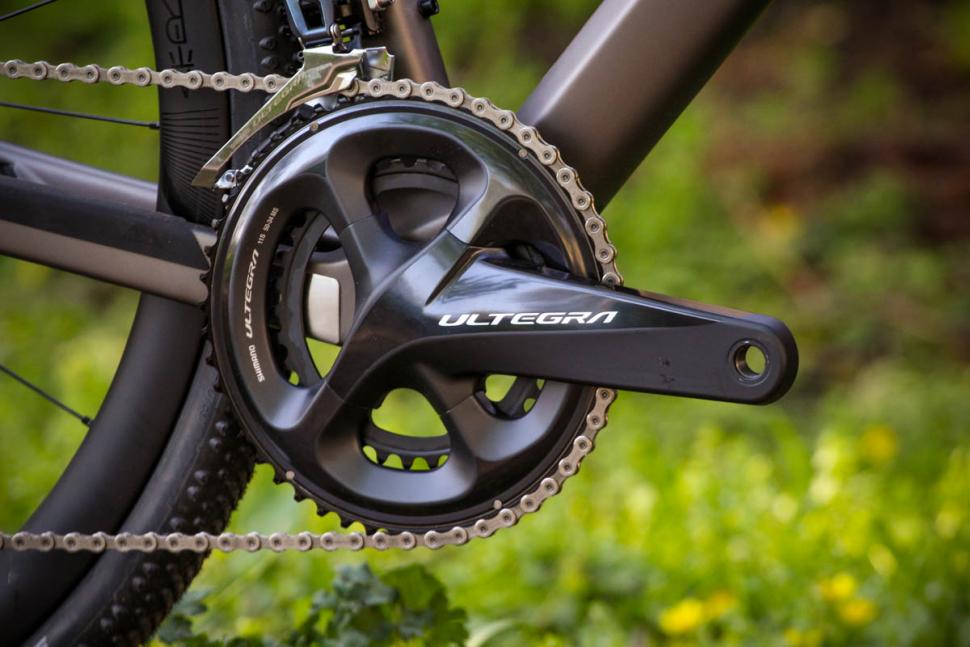

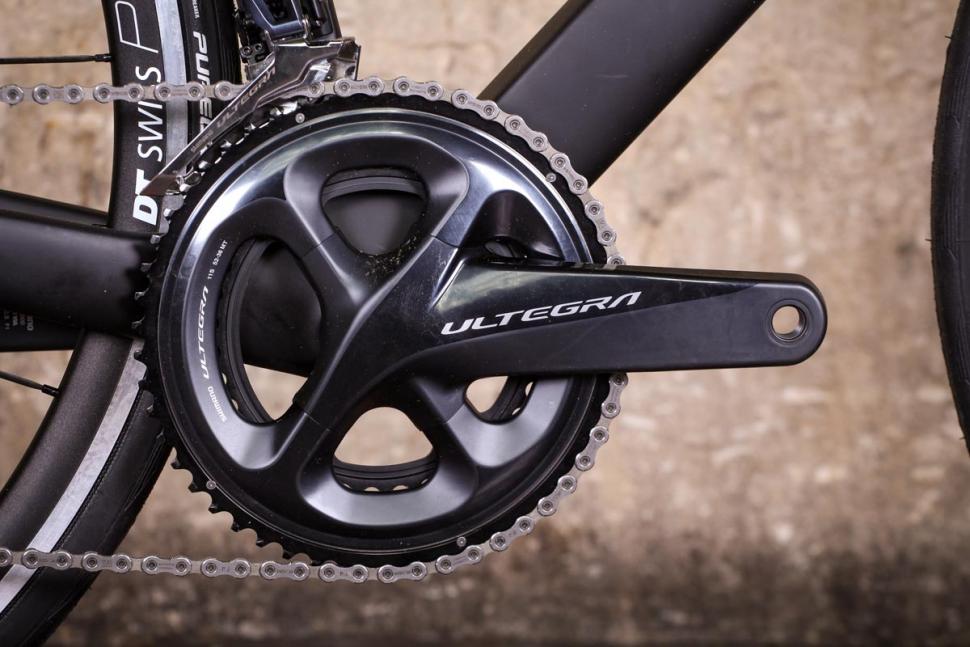


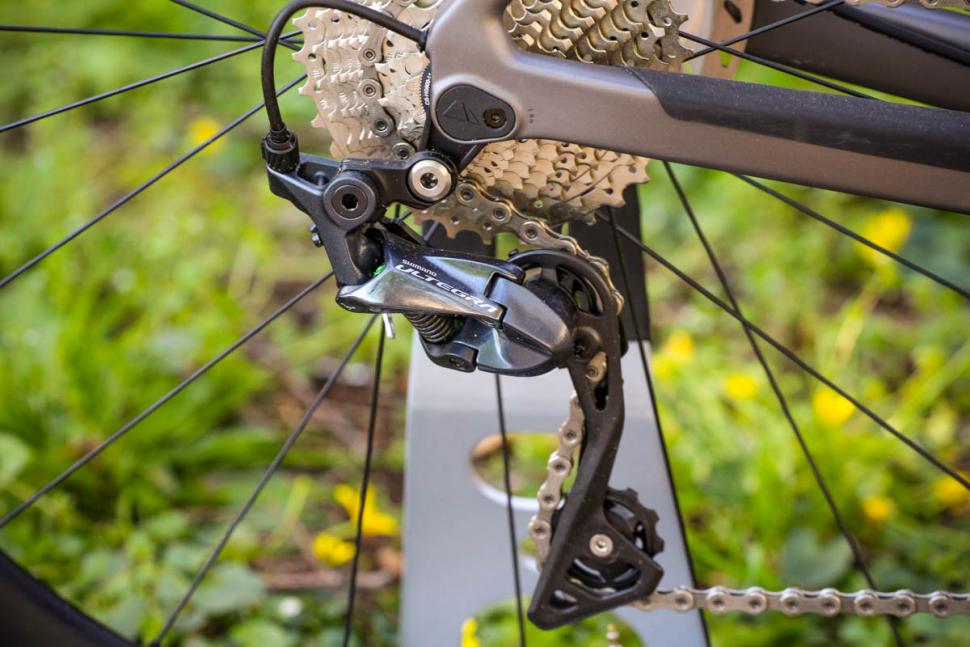

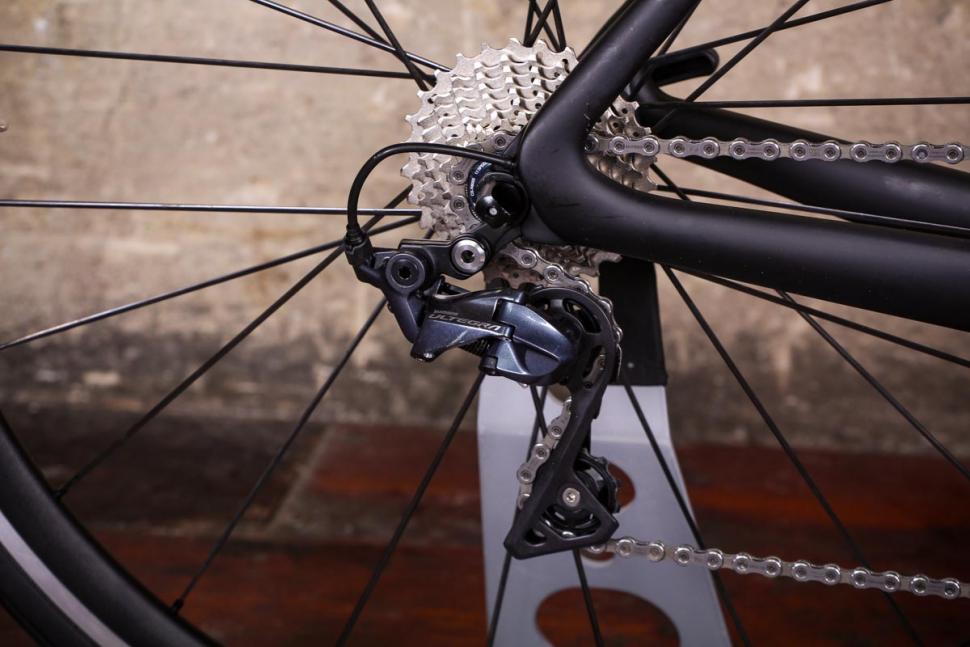
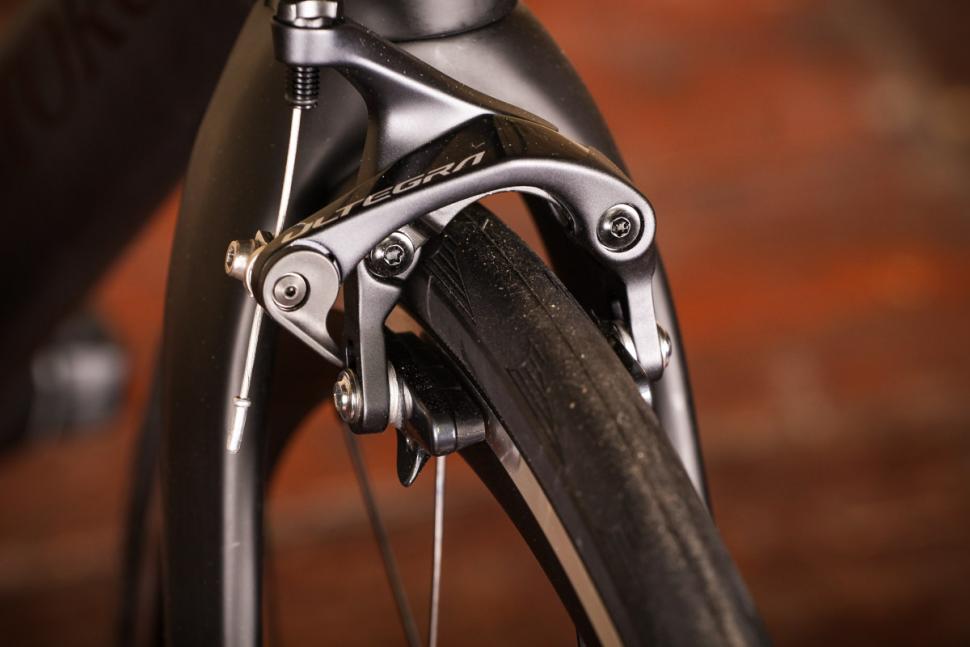

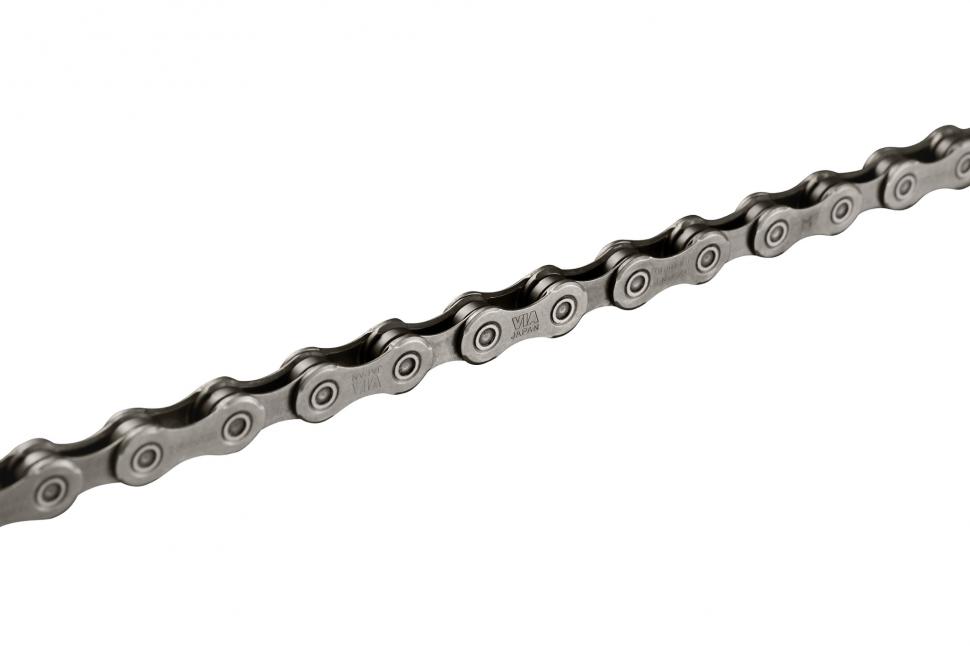



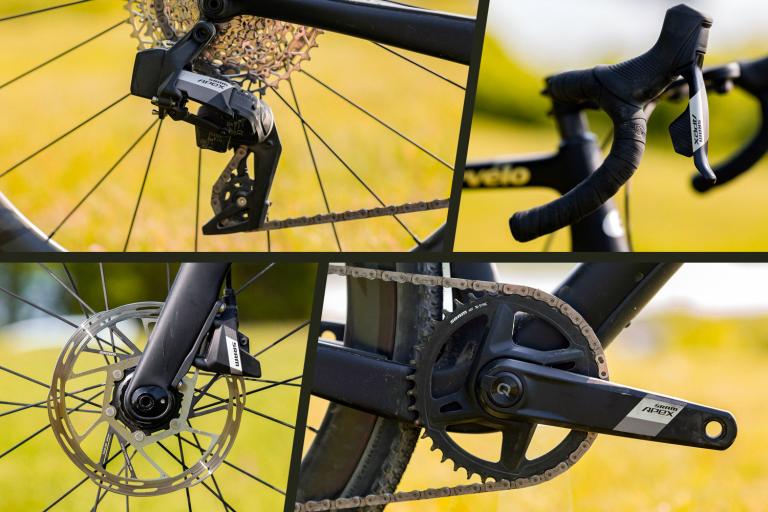
Add new comment
8 comments
“the crankset is available with 53/39 chainrings, 52/36, 50/34 and a 46/36, ideal if you want some lower gears for climbing or gravel use”
Eh? This is only true if you always climb using the big ring. What is the point of a 46/36 anyway?
My bike has this groupset. It is incredible. The precision of the shifting, after 1yr of use, is incredible - I have never needed to adjust the cable tension, or the screws. Its almost magical how well engineered it is. SRAM must be shaking their heads wondering how they get near this for the price.
I am a big fan of new front mech, which is completely redesigned... and it works so much better than old one!
Totally agree, I've just replaced my mech's with R8000 and the front shifting is a revelation of ease of setup and performance.
I too have always been a big fan of Ultegra but I'm not sure which sentence to believe here. Does it really offer "... a huge leap in performance ..." or does it merely " ... work a little bit better ..."?
"Shimano has kept its 24mm diameter axle"
Shouldn't this be "Shimano has kept its 24mm diameter spindle" as an axel is traditionally stationary relative to rotation and a spindle 'spins'...
I don't run Shimano and haven't really kept up to date with these direct mount rear mechs. How do they fit to the frame? Do you remove the existing hanger and bolt the mech to the frame in it's place?
Principle is the same, but if your frame has a 'direct mount' hanger then you remove the b-link from the mech, otherwise it fits in the exact same way as a regular rear mech using the b-link. This page explains it pretty well...
https://bike.shimano.com/en-EU/technologies/component/details/direct-mou...